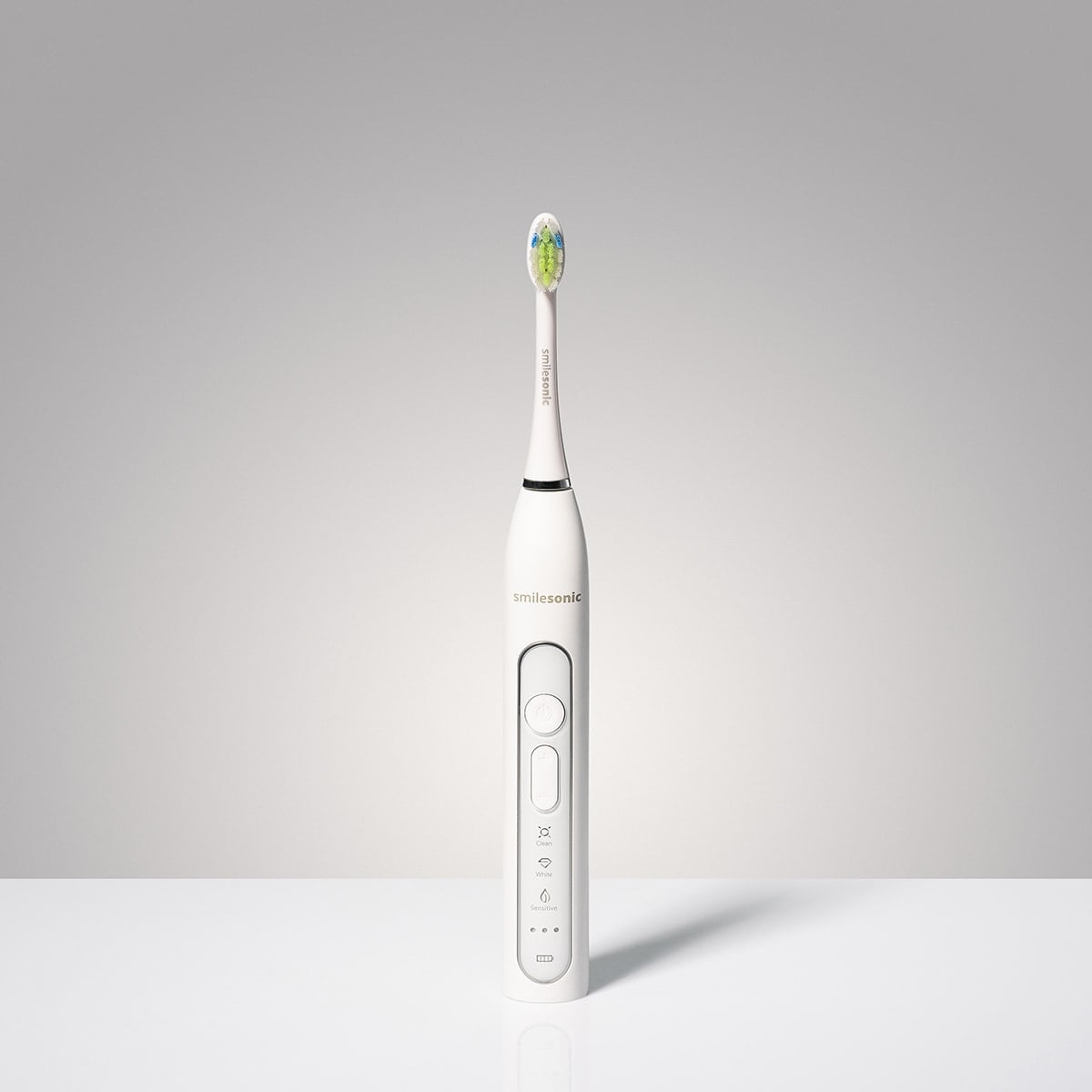White coating on the tongue – what is it, what does it indicate, how to get rid of it, and is it a sign of oral thrush?

The presence of white coating on the tongue is often caused by food debris and bacteria accumulating in the mouth. However, there are many other reasons this condition may appear. What else might cause a white tongue? How does it affect oral health? How can it be removed? Is it possible to prevent it effectively? Read on to find out.
What is a white coating on the tongue and what does it mean?
A healthy tongue is light red, pale pink, or pink in color. A white coating may indicate an underlying health issue, though not necessarily. It is often linked to poor oral hygiene, dehydration, poor diet, and excessive consumption of coffee or tea. It can also affect heavy smokers, people taking certain antibiotics, and those undergoing chemotherapy. Below is a list of conditions that may be associated with a white-coated tongue.
White tongue – causes of white coating on the tongue
A white tongue is most commonly caused by improper oral hygiene. It may also appear in cases of gastrointestinal infections, liver disease, or stomach disorders. Other potential causes include:
Oral thrush
White patches on the mucosa caused by inflammation and yeast overgrowth.
Syphilis
A bacterial infection transmitted through sexual contact, which may also present skin lesions.
Leukoplakia
A condition marked by white streaks and patches on the mucosa, often caused by smoking, fungal infections, or vitamin A and iron deficiency.
Geographic tongue
A benign inflammatory condition with a possible genetic background. It causes enlarged papillae and burning sensations when eating spicy or hot foods. Uneven surfaces of the tongue provide an ideal environment for bacteria and fungi.
Oral lichen planus
A chronic inflammatory dermatosis affecting the skin, mucosa, nails, genitals, and anus. It manifests as purple or red lesions on the skin and mucous membranes.
Oral candidiasis
A fungal infection caused by Candida species. Common among post-operative patients, oncology patients, premature babies, and newborns.
Squamous cell carcinoma
A malignant tumor that can occur on the skin, lungs, cervix, or in the oral cavity. Symptoms include white lesions, ulcers, and tissue infiltration, often accompanied by severe pain while swallowing.
Read more: Dental periostitis
White tongue and leukoplakia
A white-coated tongue may be a sign of leukoplakia (white keratosis). This condition involves the appearance of gray or white patches on the mucosa, especially on the gums, palate, and tongue. Leukoplakia is often a response to prolonged mucosal irritation and is considered the most common precancerous change in the oral cavity.
Oral thrush – fungal infection and white tongue coating
A white coating on the tongue may also result from a fungal infection. This is one of the main symptoms of oral thrush. If you notice signs of this condition, consult your general practitioner or a dentist specializing in periodontology (treatment of oral mucosal diseases).
White tongue in infants – what does it mean?
In infants, a white tongue may be caused by dehydration, insufficient oral hygiene, or oral thrush. Thrush can affect both bottle-fed and breastfed babies. These are white patches strongly attached to the mucosa, resembling cottage cheese. When present, they may cause a loss of appetite. In such cases, a doctor should remove the coating. Keep a close eye on your baby’s mouth and seek professional advice if needed.
Tongue coating and sore throat – when is a white tongue a cause for concern?
A white-coated tongue accompanied by a sore throat may indicate strep throat or tonsillitis. Treatment typically involves anti-inflammatory and pain-relieving medications, along with adequate hydration. In some cases, antibiotics and probiotics may be necessary to prevent a secondary fungal infection. If you experience both a sore throat and a coated tongue, consult a doctor.
When should tongue discoloration be taken seriously? Particularly when it’s accompanied by symptoms like oral burning or when the color changes suddenly and dramatically. If alarming symptoms appear, schedule a medical appointment.
Preventing white coating on the tongue
To prevent a white coating on the tongue, it’s essential to maintain good oral hygiene. Use tongue scrapers to clean the tongue surface. Afterward, rinse your mouth thoroughly with water or a mouthwash. Proper supplementation is also important. If you frequently suffer from fungal infections, consider antifungal supplements and immunity-boosting agents. Stay hydrated by drinking at least two liters of water per day. Ignoring a white coating can lead to taste disorders, oral candidiasis, and gum inflammation.
How to get rid of white tongue? Home remedies
If you notice a white coating on your tongue, remove it using a tongue scraper as mentioned earlier. Use antibacterial mouthwash and dental floss to eliminate plaque and food particles from between your teeth.
Some home remedies include rinsing with sage and chamomile infusions, chewing a garlic clove daily, and brushing with a paste made from turmeric and lemon juice. However, the foundation is consistent and thorough oral hygiene, including frequent brushing and regular dental checkups.





